Abstract
The reporting of critical values is an important function of the clinical laboratory. The success of critical value reporting depends on laboratory personnel recognizing critical values and effectively communicating them to clinicians, and on clinicians correctly interpreting and using the critical values to provide appropriate patient care. At LDS Hospital, we have conducted a study of the critical value reporting process. Results of the study indicate that few critical values are actually reported by the clinical laboratory (only 28 of 294 critical values during November 24-30, 1992). Data on the quality of critical value documentation showed that 19 of 124 (15%) patient charts audited during January-February, 1993 contained no documentation that clinicians were ever aware of the critical value, or that corrective actions were taken. Other data on the quality of critical value reporting were also collected and analyzed. Study results have been used to design and implement a computerized critical value reporting system to improve the quality of critical value reporting at our hospital.
Full text
PDF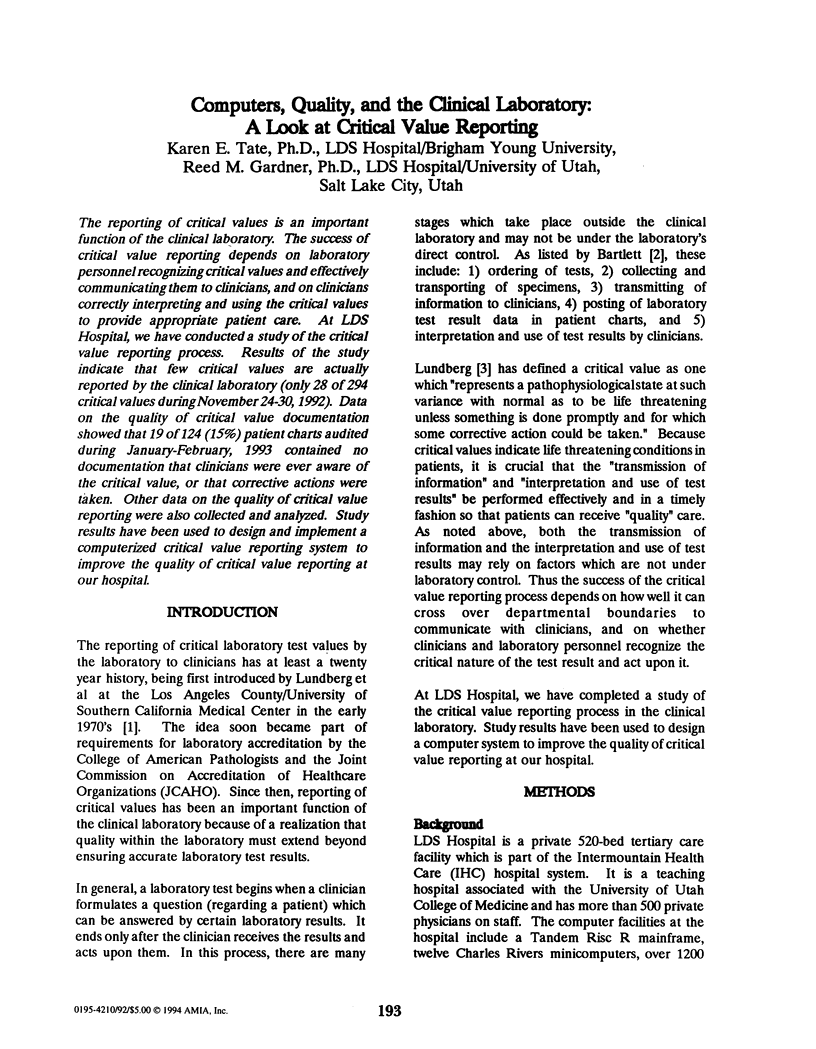
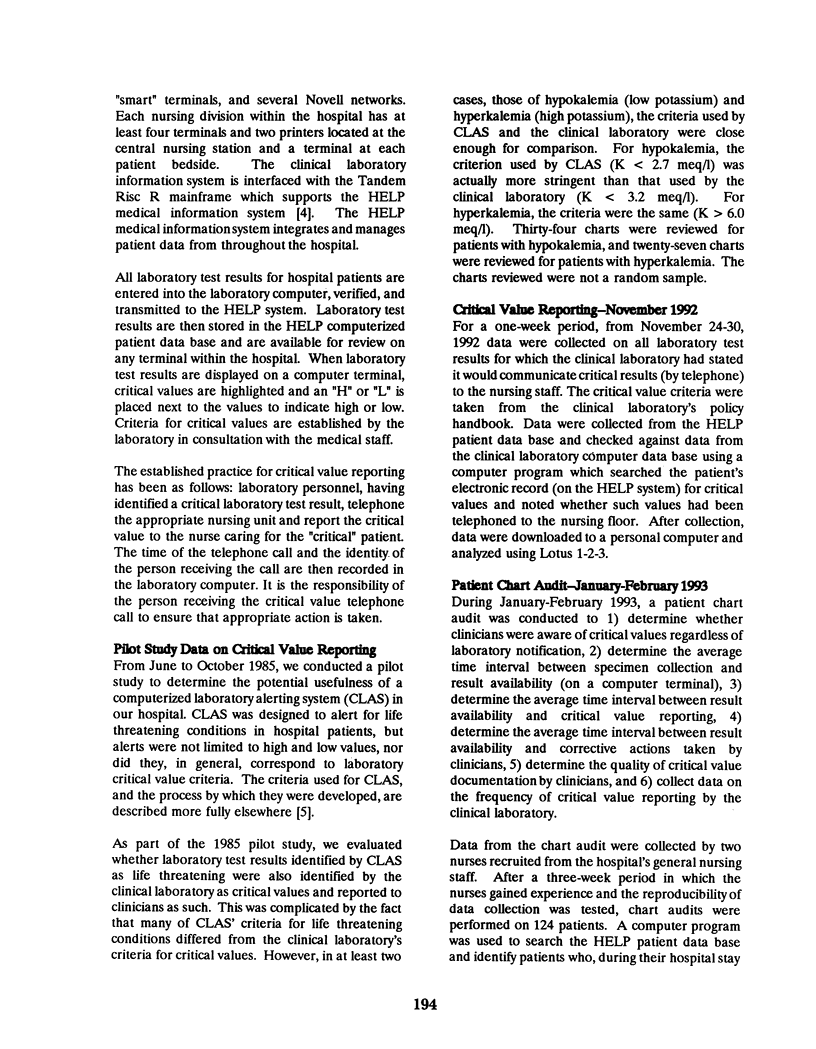
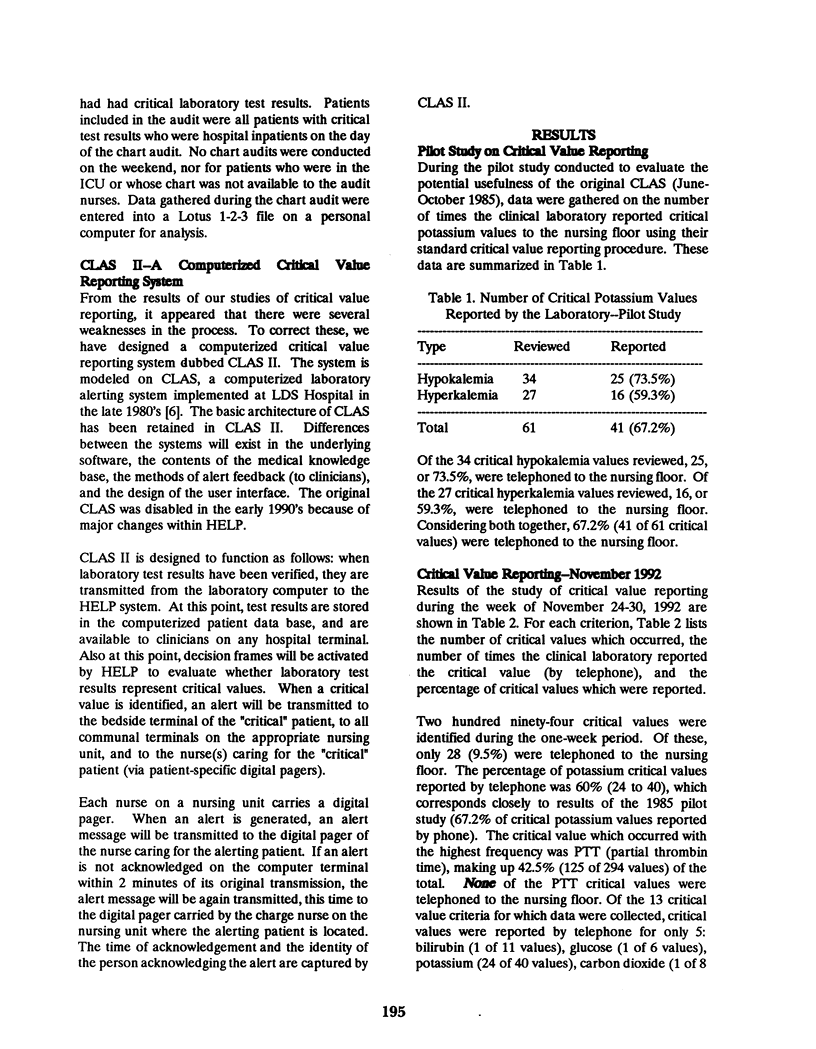
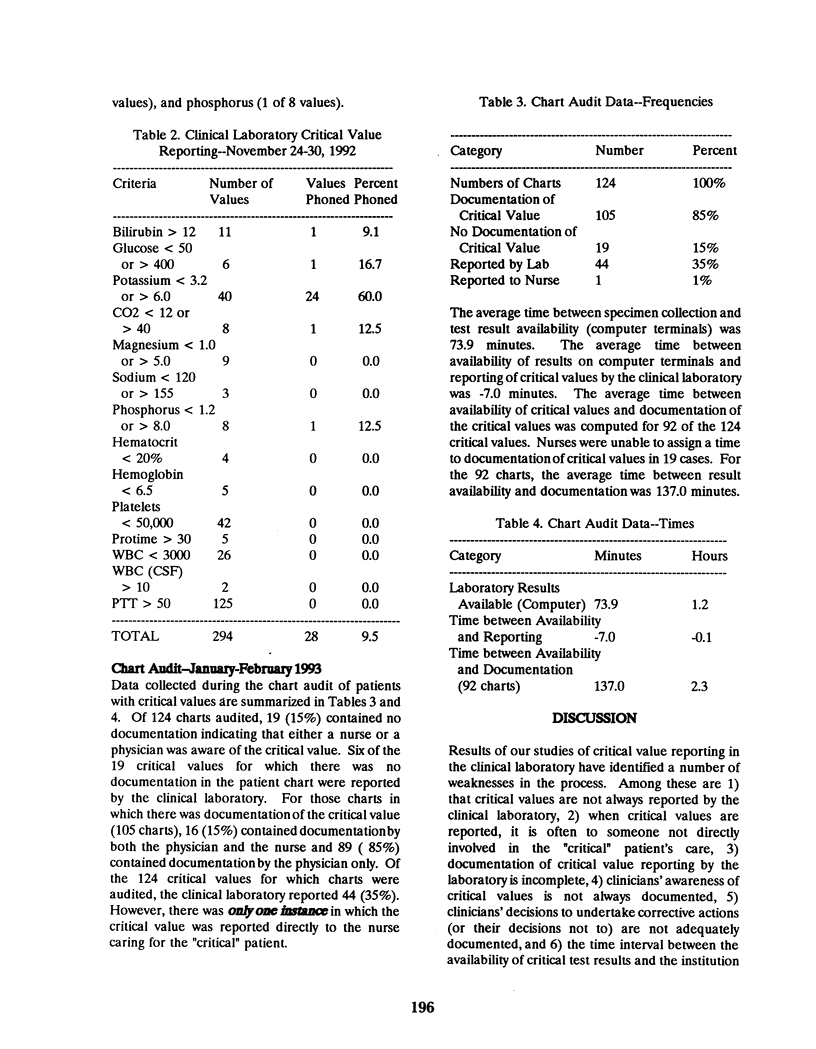
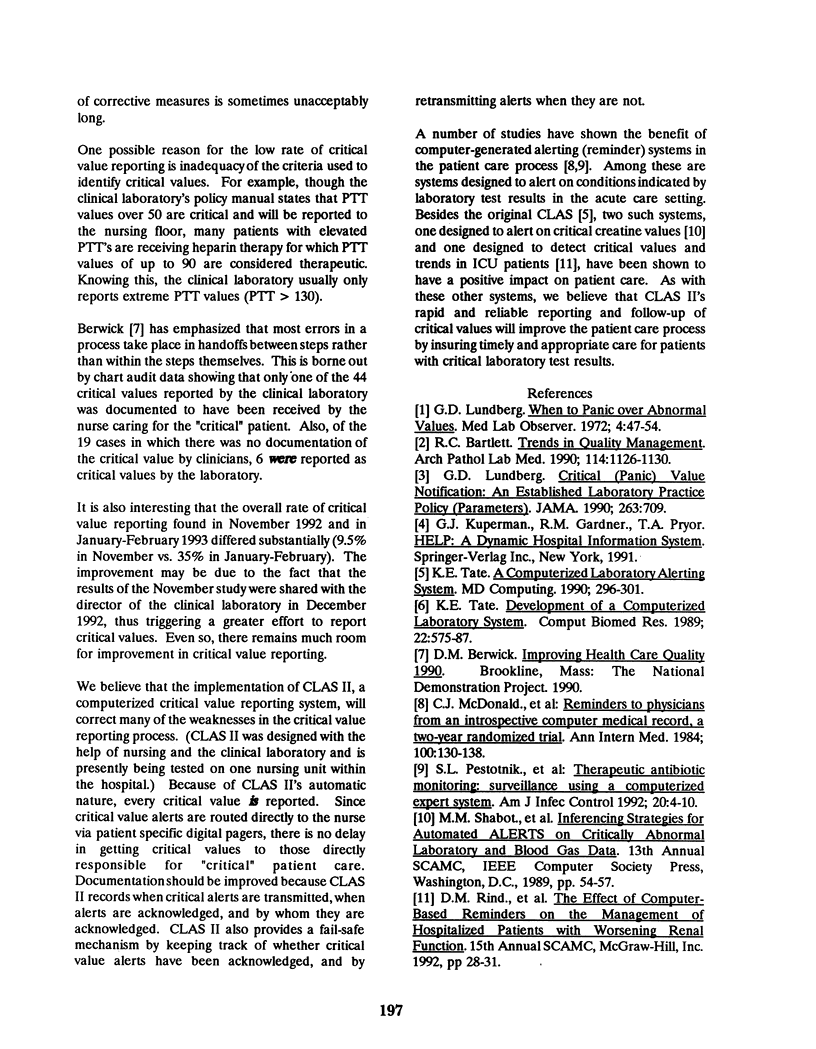
Selected References
These references are in PubMed. This may not be the complete list of references from this article.
- Bartlett R. C. Trends in quality management. Arch Pathol Lab Med. 1990 Nov;114(11):1126–1130. [PubMed] [Google Scholar]
- Lundberg G. D. Critical (panic) value notification: an established laboratory practice policy (parameter) JAMA. 1990 Feb 2;263(5):709–709. [PubMed] [Google Scholar]
- McDonald C. J., Hui S. L., Smith D. M., Tierney W. M., Cohen S. J., Weinberger M., McCabe G. P. Reminders to physicians from an introspective computer medical record. A two-year randomized trial. Ann Intern Med. 1984 Jan;100(1):130–138. doi: 10.7326/0003-4819-100-1-130. [DOI] [PubMed] [Google Scholar]
- Tate K. E., Gardner R. M., Weaver L. K. A computerized laboratory alerting system. MD Comput. 1990 Sep-Oct;7(5):296–301. [PubMed] [Google Scholar]


